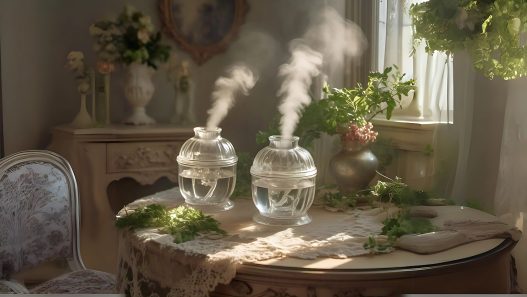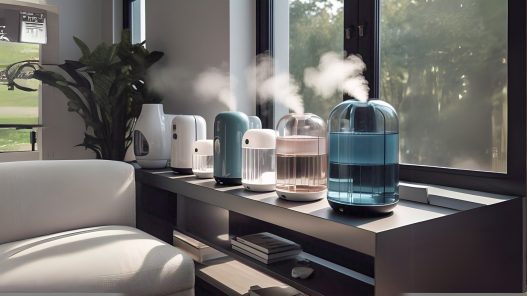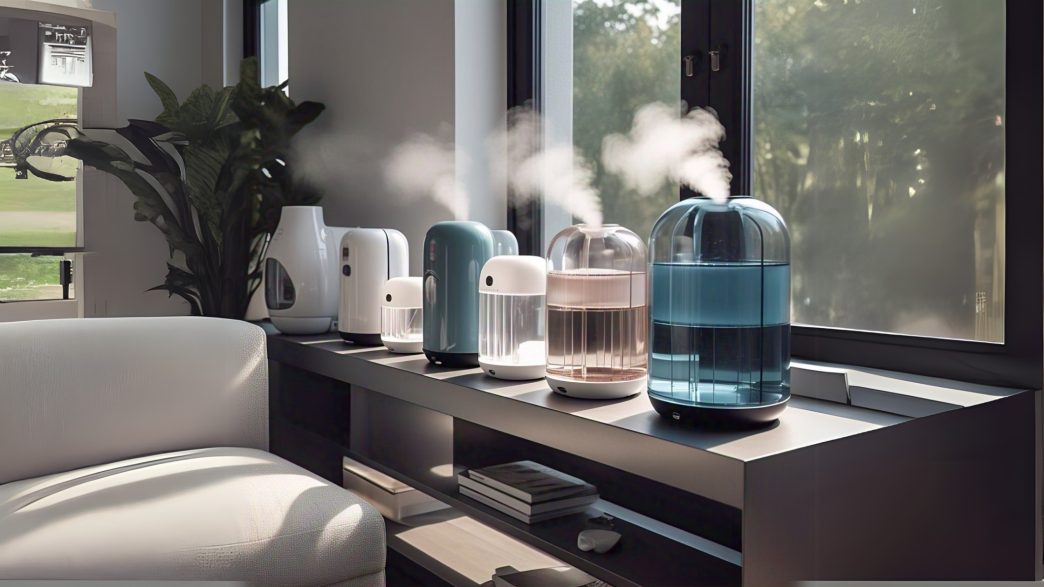Introduction
Humidity plays a crucial role in maintaining a comfortable and healthy indoor environment. When the air in your home becomes too dry, it can lead to various health issues, damage to furniture, and discomfort. This is where humidifiers come in. In this guide, we will explore what humidifiers are, how they work, their benefits, common myths, fun facts, and how to choose the right one for your needs.
What is a Humidifier?
A humidifier is a device that increases the moisture content in the air, helping to maintain optimal humidity levels in a room or an entire house. They are particularly useful in dry climates and during winter when indoor heating systems can significantly reduce air moisture.
Types of Humidifiers
There are several types of humidifiers, each designed to suit different needs and preferences:
- Evaporative Humidifiers – These use a wick filter that absorbs water and a fan that blows air through it, allowing the water to evaporate and humidify the air. They are self-regulating, meaning they won’t over-humidify a room.
- Ultrasonic Humidifiers – Utilize ultrasonic vibrations to create a fine mist of water that is released into the air. They are quiet and energy-efficient but can produce white dust if tap water is used.
- Steam Vaporizers – Boil water to produce steam, which is then cooled slightly before being released into the air. These are great for killing bacteria but can be dangerous for homes with children due to hot water.
- Impeller Humidifiers – Use a rotating disk to fling water into a diffuser, which then breaks it into fine droplets that enter the air. These are often budget-friendly but can be noisier.
- Whole-House Humidifiers – Integrated into HVAC systems to control humidity levels throughout the entire home, offering convenience but requiring professional installation.
How Do Humidifiers Work?
Humidifiers function by adding moisture to the air in different ways, depending on the type. However, the basic process involves drawing in air, passing it through water (or generating mist/steam), and then dispersing it back into the environment with increased humidity. Most modern humidifiers come with sensors to regulate humidity levels automatically.
Key Components of a Humidifier
- Water Reservoir: Stores water to be converted into moisture.
- Evaporative Filter or Wick: Helps distribute moisture evenly.
- Fan (in evaporative models): Circulates air through the device.
- Mist Outlet or Nozzle: Releases humidified air back into the room.
- Hygrometer (in advanced models): Monitors and controls humidity levels automatically.
Benefits of Using a Humidifier
1. Health Benefits
- Prevents Dry Skin and Irritation: Dry air can cause skin to become rough and flaky. A humidifier keeps skin hydrated.
- Eases Respiratory Symptoms: Moist air can relieve symptoms of colds, asthma, and allergies by preventing nasal passages from drying out.
- Reduces Risk of Infections: Dry air can facilitate the spread of airborne viruses. Proper humidity levels help reduce the risk of infections.
- Improves Sleep Quality: Adds comfort by reducing snoring and preventing dry throat issues.
2. Protects Home and Furniture
- Prevents wood furniture and floors from cracking due to dryness.
- Reduces static electricity that can damage electronic devices.
- Keeps houseplants healthy by maintaining proper moisture levels.
3. Enhances Indoor Comfort
- Helps maintain an optimal indoor climate, especially in winter.
- Reduces dust and allergens by making air particles heavier, causing them to settle instead of floating around.
Fun Facts About Humidifiers
- The concept of humidifying air dates back to ancient times when people would place bowls of water near fire pits to add moisture to indoor air.
- Some museums use humidifiers to preserve delicate artworks, preventing them from drying out and cracking.
- Humidifiers can help you save money on heating bills. Moist air feels warmer than dry air, allowing you to lower your thermostat while still feeling comfortable.
- Certain humidifiers can be used with essential oils, doubling as aromatherapy devices for relaxation and stress relief.
Myth Busting: Common Misconceptions About Humidifiers
Myth 1: More Humidity is Always Better
Fact: Too much humidity can encourage mold growth, dust mites, and bacteria. The ideal indoor humidity level is between 30% and 50%.
Myth 2: Humidifiers Make a Room Feel Cold
Fact: While mist might feel cool, humidity helps retain warmth in the air, making a space feel cozier.
Myth 3: Any Water Can Be Used in a Humidifier
Fact: Tap water contains minerals that can leave white dust in ultrasonic humidifiers. Distilled or demineralized water is the best choice.
Myth 4: Humidifiers Are Only Needed in Winter
Fact: While they are commonly used in winter, air conditioners can also dry out indoor air in summer, making humidifiers useful year-round.
How to Choose the Right Humidifier
1. Consider Room Size
- Small Humidifiers (Tabletop models): Best for single rooms or offices.
- Medium Humidifiers: Suitable for bedrooms and living rooms.
- Large Humidifiers or Whole-House Systems: Ideal for covering an entire home.
2. Choose the Type That Suits Your Needs
- For Quiet Operation: Ultrasonic humidifiers are the best choice.
- For Cost-Effectiveness: Evaporative humidifiers are energy-efficient and affordable.
- For Germ-Free Air: Steam vaporizers kill bacteria and germs before releasing mist.
3. Maintenance and Cleaning
- Look for models with easy-to-clean tanks to prevent mold and bacteria buildup.
- Replace filters (if applicable) regularly for optimal performance.
- Use distilled water to reduce mineral deposits and white dust.
Common Mistakes to Avoid
- Over-Humidifying the Air: Too much humidity can promote mold growth and dust mites.
- Not Cleaning the Humidifier Regularly: Can lead to bacterial contamination and respiratory issues.
- Using Tap Water in Ultrasonic Models: Can cause white dust due to mineral deposits.
- Placing It Too Close to Walls or Furniture: Can lead to moisture damage.
- Ignoring Built-In Hygrometers: Leads to improper humidity levels.
Conclusion
A humidifier is an essential device for maintaining a comfortable and healthy indoor environment. It helps prevent health issues, protects furniture, and enhances overall air quality. Choosing the right type of humidifier, maintaining it properly, and using it wisely will ensure that you reap its full benefits.
By understanding how humidifiers work and how to use them effectively, you can create a more comfortable and healthier living space all year round.












